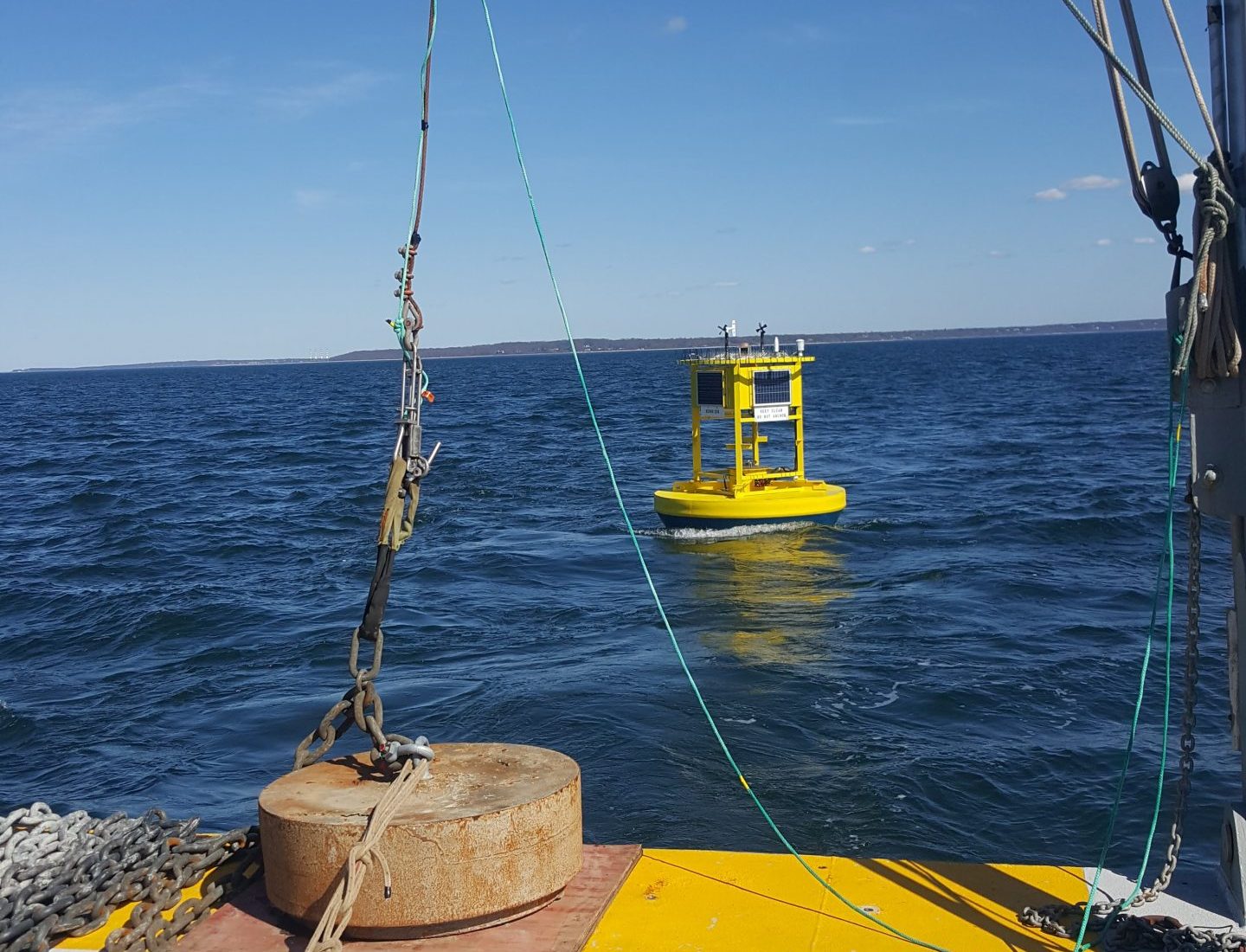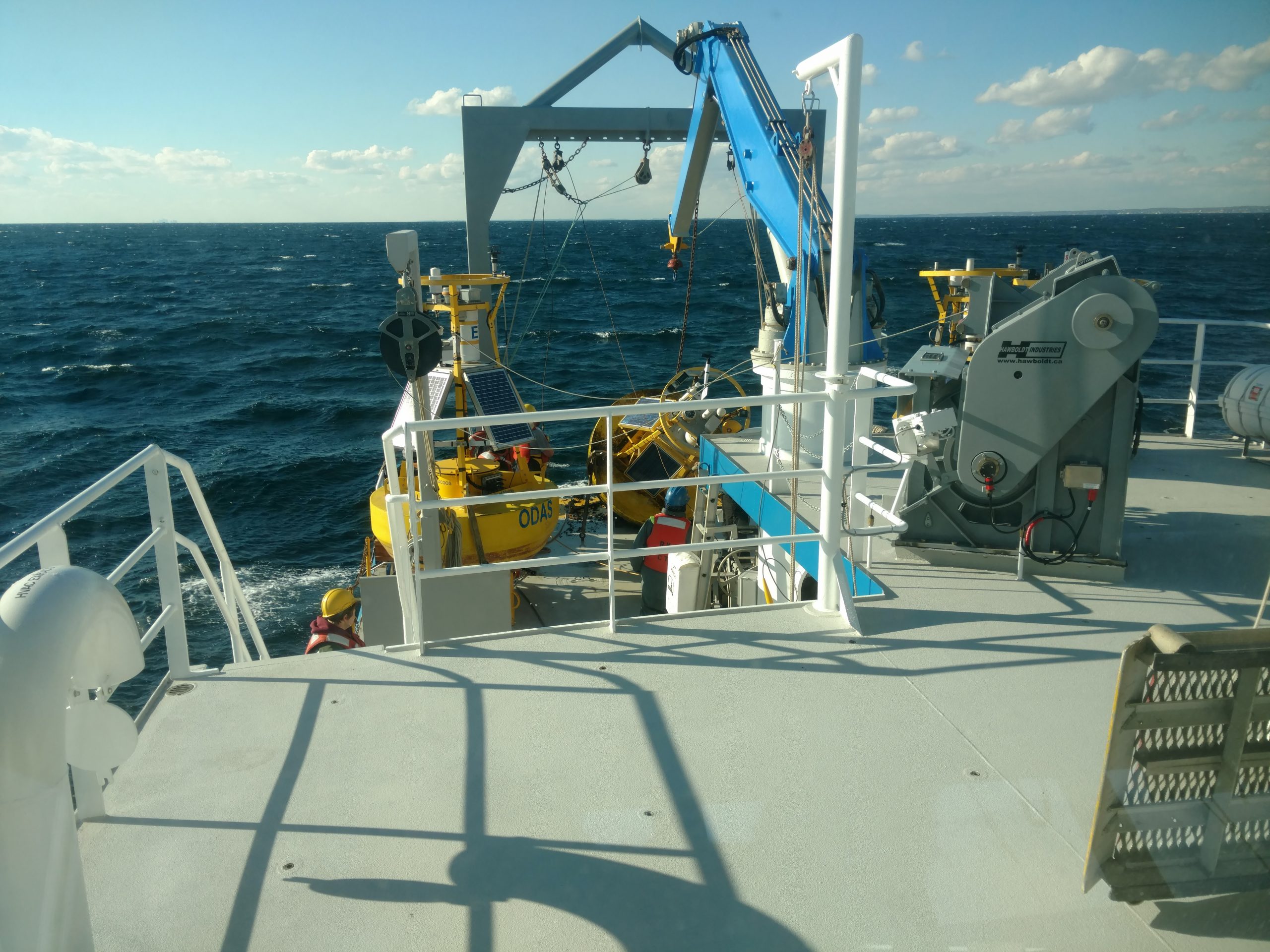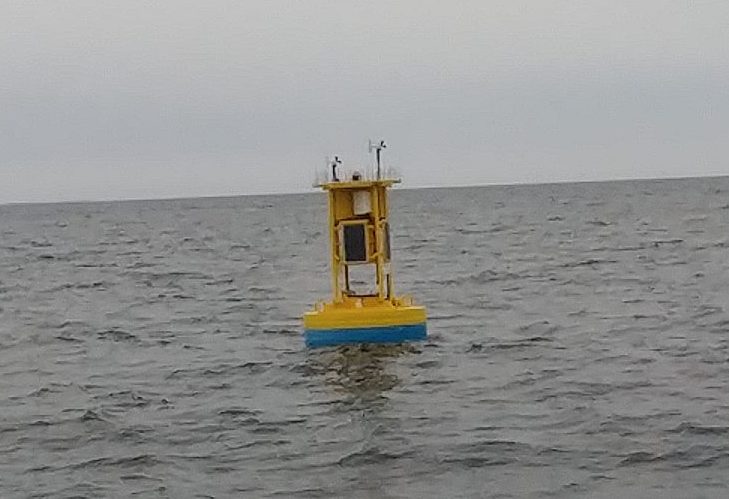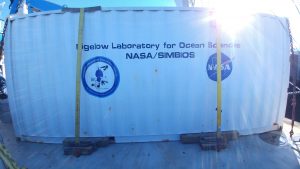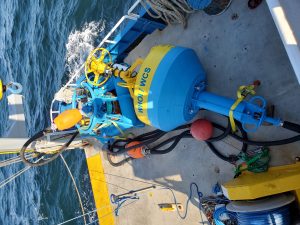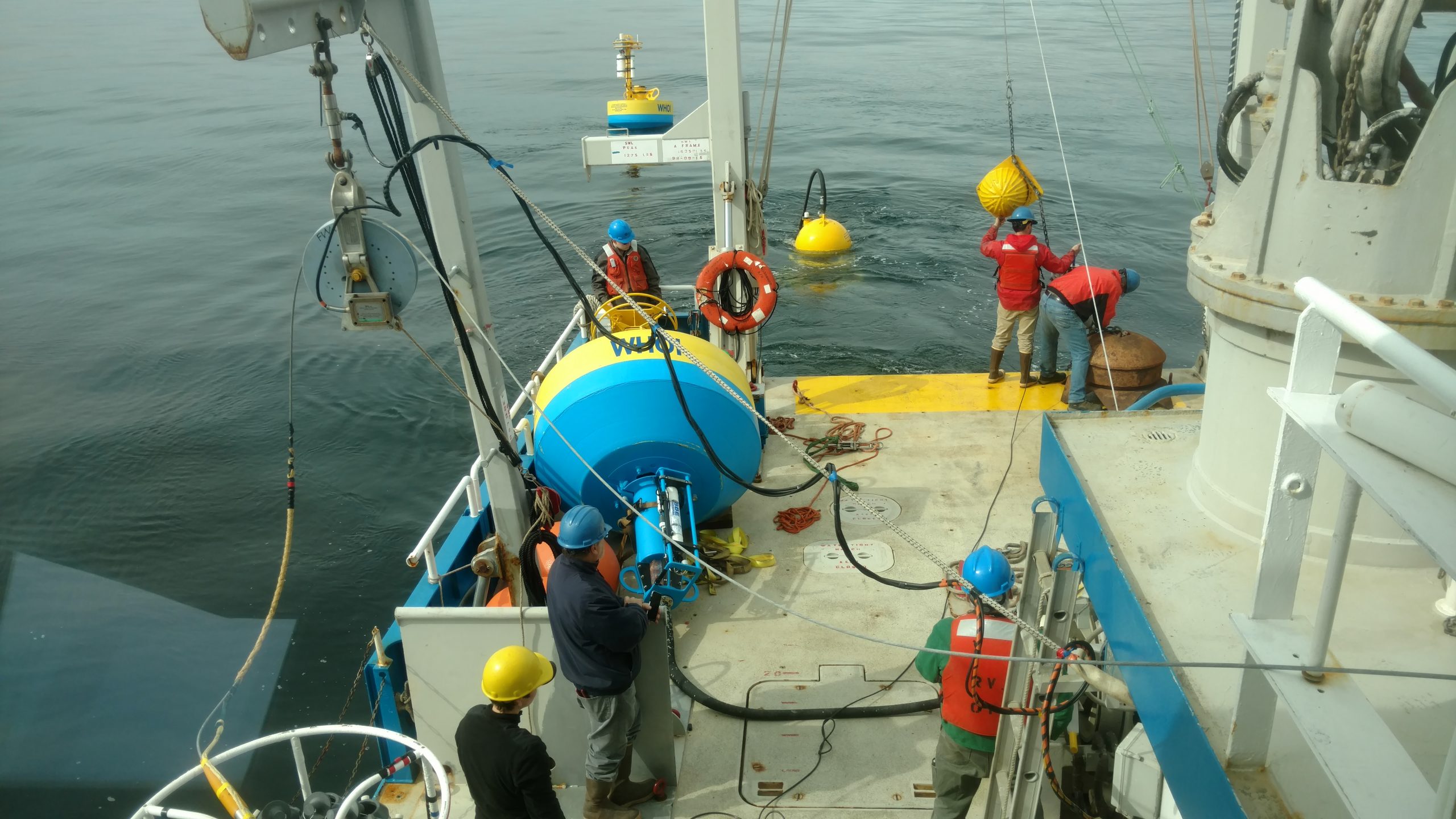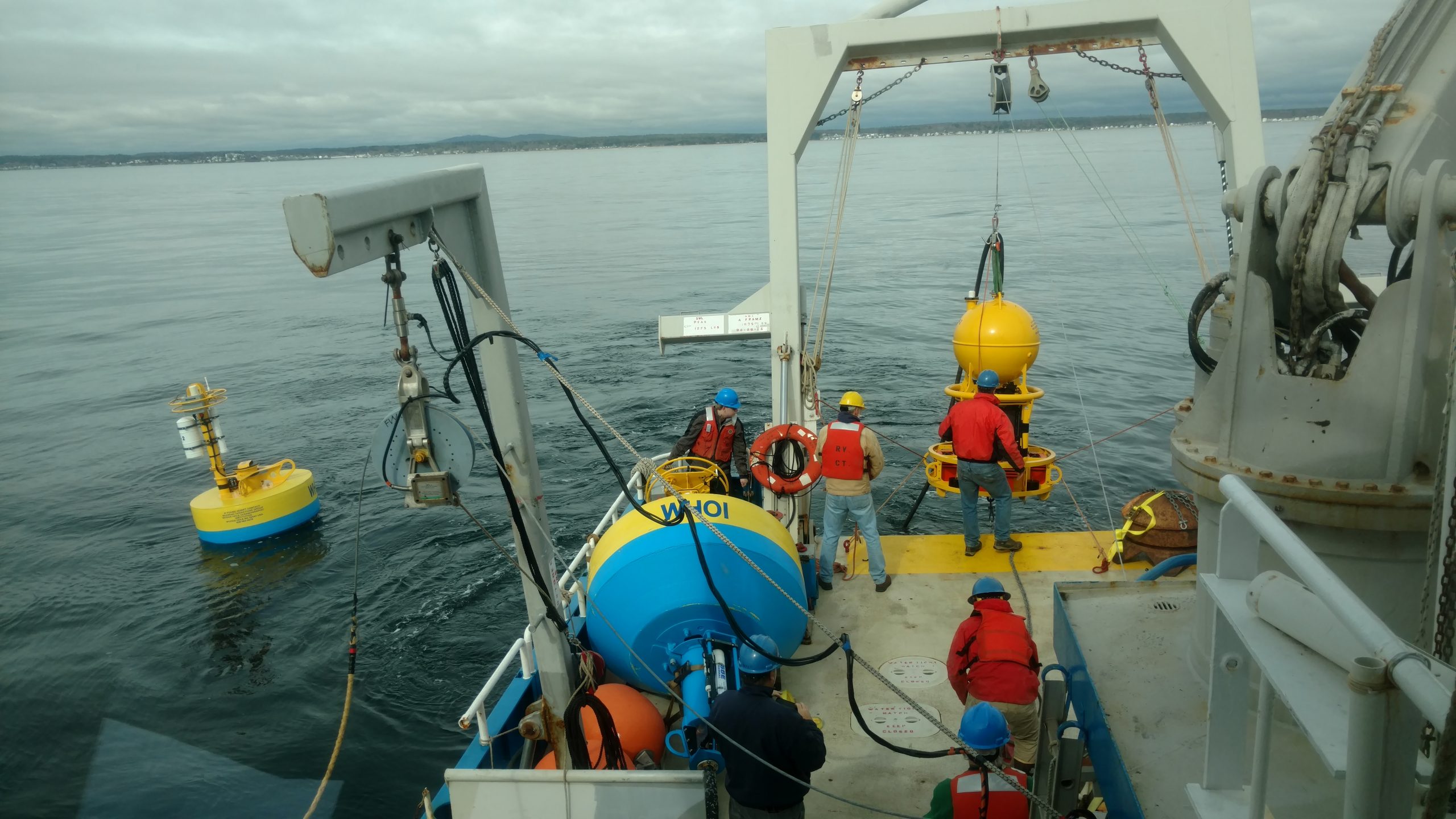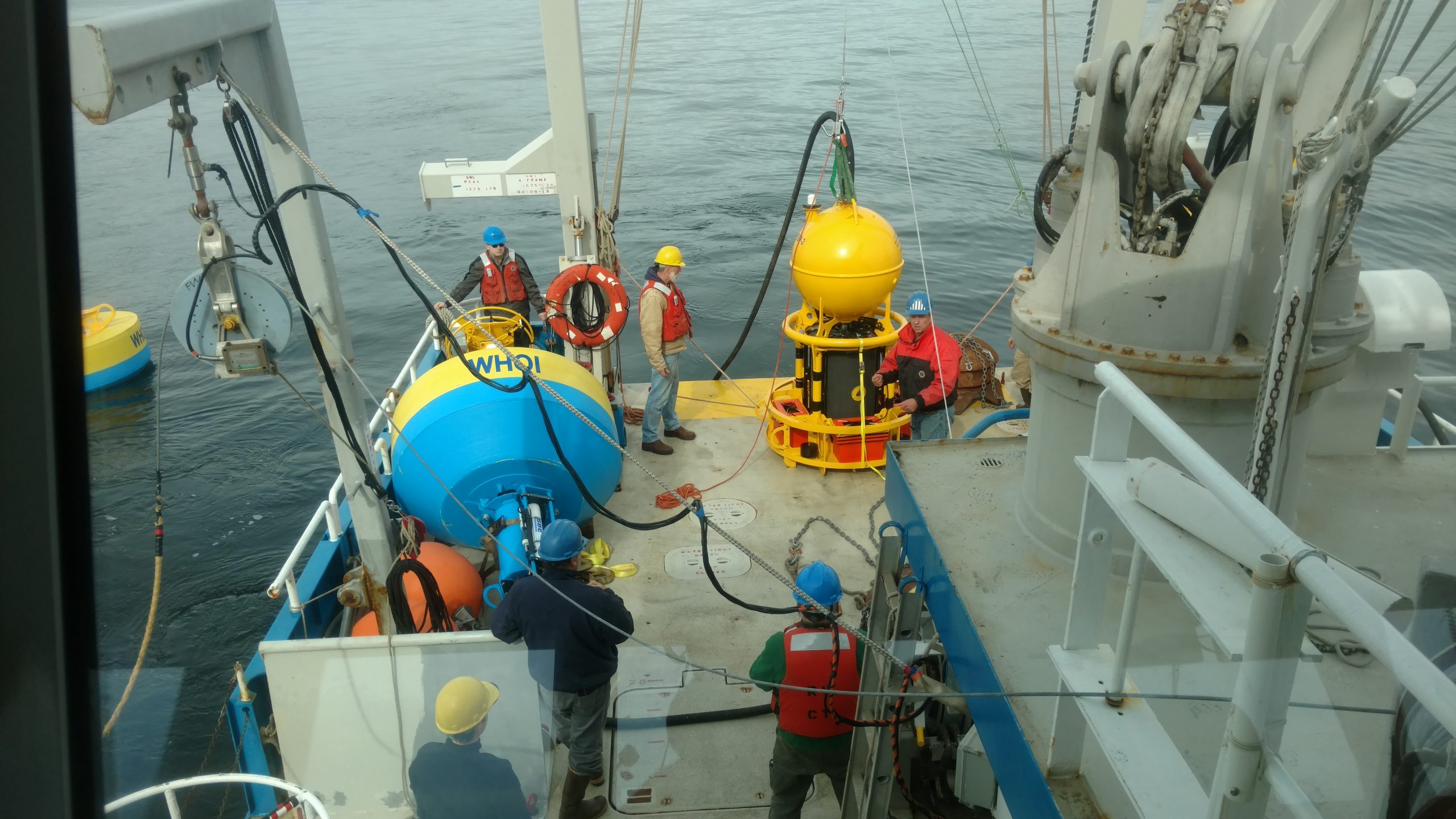Research Trips the R/V Connecticut Participates In
NERACOOS BUOYS
The Northeastern Regional Association of Coastal Ocean Observing System (NERACOOS) spans from the coastal waters of the Canadian Maritime Provinces to the New York Bight. The RV Connecticut has worked with two groups that own and operate buoy’s associated with (NERACOOS), the University of Connecticut, working in the Long Island Sound and the University of Maine, working in the Gulf of Maine. The RV Connecticut has participated in deploying and recovering these buoys each year.
To learn more about the project: http://www.neracoos.org/
University of Connecticut: http://lisicos.uconn.edu/
University of Maine: http://gyre.umeoce.maine.edu/buoyhome.php
A group of scientists from the Bigelow Laboratory for Ocean Sciences (BLOS) began the Gulf of Maine North Atlantic Time Series (GNATS), in 1998. Multiple times a year, this group boards the the R/V Connecticut and makes the trek across the Gulf of Maine to about 12nm off the coast of Nova Scotia. A van gets lowered on to the back deck and strapped down for the duration of the cruise, where the scientist will study the Gulf of Maine.
To learn more about the project:
Nov 5. 2018 “Reflections on 20 years of GNATS” https://www.bigelow.org/news/articles/2018-11-05.html
Since June 23, 2016, buoys have been in the New York Bight, receiving real-time acoustics data about the whales in the area. The RV Connecticut has deployed and recovered the buoys.
To learn more about the project:
Robot4Whales: http://dcs.whoi.edu/
June 27, 2016 – Scientists Now Listening for Whales in New York Waters with Real-time Acoustic Buoy: https://www.whoi.edu/press-room/news-release/scientists-now-listening-for-whales-in-new-york/#:~:text=On%20Thursday%2C%20June%2023rd,feet%20above%20the%20sea%20surface.
April 9, 2019 – “New Initiative Launched to Help Protect New York’s Great Whales”: https://apnews.com/389e1295f3fe42d0832f6af863921750
ESP – WHOI & University of Maine
The R/V Connecticut has worked with this group from 2011-2012 and 2015-2019.
In 2019, this project consisted of three trips leaving from Woods Hole Oceanographic (WHOI) up to the Bay of Fundy. During the first cruise, four ESP buoys were deployed, two in the Gulf of Maine and two in the Bay of Fundy. On the third cruise the bouys were recovered to be analyzed back in the lab. On all three cruises the R/V Connecticut conduced a number of CTD casts along five transect lines across the Northern Gulf of Maine and the Southern Bay of Fundy.
2019 Bloom Season – June 13-17 2019: https://www.whoi.edu/page.do?pid=164696
MARN 3001 Class – University of Connecticut
The Marn 3001, a class with mainly juniors in the Marine Science Program, board the RV Connecticut to take a trip up the Thames Rivers. The class does CTD casts, sediment grabs and secchi disk casts. While transiting between stations the samples were processed to be later analyzed back in the lab.
Thayer-Mahan
A group from the Thayer-Mahan company joins the RV Connecticut for a week testing the Katfish-180. The testing consisted of deploying the Katfish-180 and running lines up and down the Long Island Sound and Thames River.
Right Whale Research Cruise – NOAA
In May 0f 2019, the R/V Connecticut began a 21-day research cruise, researching the North Atlantic Right Whales.
To learn more about the North Atlantic Right Whales: https://www.fisheries.noaa.gov/species/north-atlantic-right-whale
PS Portland Shipwreck – WHOI
R/V Connecticut participated with NURC-UConn, in 2002, to confirm where the PS Portland sank, with side scan sonars and ROV investigations. The R/V Connecticut had the opportunity to return to the site, in 2019 and deploy “Pixel, a cinema-class remotely operated vehicle (ROV) and the ROV Rover. These ROVs will record stunning ultra-high resolution imagery” to take a look at the wreck and the life that has formed and the possible changes that have occurred. From the site it was a goal to speak to classrooms and the public about the archeology, biology and other wrecks found in the sanctuary. Due to bad weather, Pixel was unable to explore, but the scientists were able to provide the live feed to the classrooms.
Information about the PS Portland: https://stellwagen.noaa.gov/maritime/portland.html
“Expedition to Stellwagen Bank National Marine Sanctuary” https://www.whoi.edu/know-your-ocean/blogs-expeditions/expedition-the-life-and-history-of-stellwagen-bank-national-marine-sanctuary/
